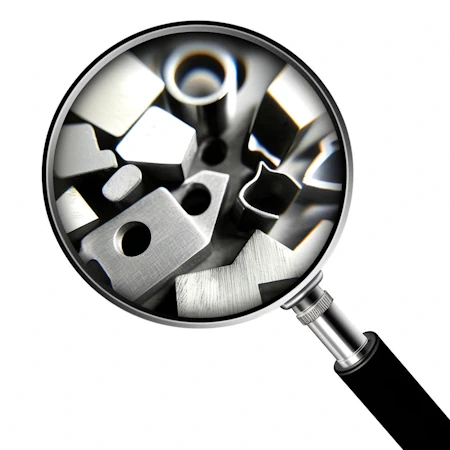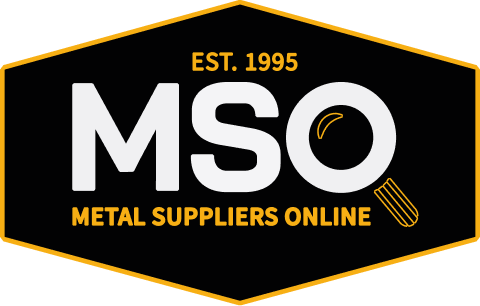Back To Browse
Titanium
Titanium 6-2-2-2-2-.25
Annealing Procedure
Soak at 1300-1500 F for 2 hours, air cool.
Applications
Typical applications include airframe and jet engine components.
Cold Workability
The cold working characteristics of this alloy are similar to those found in austenitic stainless steels. In multiple forming operations, intermediate stress relieving is recommended to offset the alloy's tendency to work harden. Post-work annealing is recommended to reattain maximum performance characteristics.
Forgeability
Rough forge at 1650-1750 F, finish at 1600-1700 F.
Formability
Hot forming will reduce both the springback and required forming forces, and will increase the overall ductility of the material.
Hot Workability
Hot forming will reduce both the springback and required forming forces, and will increase the overall ductility of the material.
Machinability
As a family, titanium and its alloys have developed a mystique as a nightmare to machine. This is simply not the case. Experienced operators have compared its characteristics to those found in 316 stainless steel. Recommended practice includes high coolant flow(to offset the material's low thermal conductivity), slow speeds and relatively high feed rates. Tooling should be tungsten carbide designations C1-C4 or cobalt type high speed tools.
Other Comments
Other Physical Properties
Beta Transus (F +/- 25) 1780
Principle Design Features
This is an alpha-beta alloy generally selected for its high strength, fracture toughness and intermediate creep strength. Not generally available at the distributor level, it is widely available from producers in bar, billet, sheet and plate. Beta Transus (F +/- 25) 1780
Weldability
Rated as" limited" in terms of weldability.
Known Forms
Flat Bar
Forgings-Discs
Hexagon Bar
Open Die Forgings
Pipe-Seamless
Pipe-Welded
Plate
Round Bar
Sheet
Square Bar
Strip
Tube-Round (Seamless)
Tube-Round (Welded)
Wire Rod
Wire-Round
Wire-Welding
Billet
Coil
Contour Rings
Fittings
Mandrel Rings
Shafts
Welded Rings
Additional Data
Chemical Elements
| Aluminum | 5.25 - 6.25 |
| Carbon | 0.05 max |
| Chromium | 1.75 - 2.25 |
| Hydrogen | 0.0125 max |
| Iron | 0.25 max |
| Molybdenum | 1.75 - 2.25 |
| Nitrogen | 0.03 max |
| Oxygen | 0.14 max |
| Silicon | 0.2 - 0.3 |
| Tin | 1.75 - 2.25 |
| Titanium | Balance |
| Zirconium | 1.75 - 2.25 |
Physical Properties
Density: 0.165lb/in³
Mechanical Properties
Modulus of Elasticity – Tension: 17.7MSI
Thermal Expansion
| Condition | Min | Max | Expansion Coefficient |
|---|---|---|---|
| Annealed | 32 °F | 600 °F | 5.1 µin/in/°F |
Rupture Test Data
| Condition | Form | Temperature | Time | Rupture Strength |
|---|---|---|---|---|
| Test Specimen Annealed | Sheet | 800 °F | 100 Hours | 122 KSI |
| Test Specimen Annealed | Sheet | 600 °F | 100 Hours | 132 KSI |
| Test Specimen Annealed | Sheet | 400 °F | 100 Hours | 142 KSI |
Creep Test Data
| Condition | Form | Temperature | Time | Applied Stress | Creep Strain |
|---|---|---|---|---|---|
| Test Specimen Annealed | Sheet | 800 °F | 100 Hours | 0.2 % | 83 mil/in |
| Test Specimen Annealed | Sheet | 600 °F | 100 Hours | 0.2 % | 120 mil/in |
| Test Specimen Annealed | Sheet | 400 °F | 100 Hours | 0.2 % | 122 mil/in |
Mechanical Test Data
| Form | Sheet |
| Condition | Solution Annealed & Aged |
| Measurement Temperature | 70°F |
| Elongation | 12% |
| Reduction of Area | 20% |
| Tensile Strength | 170KSI |
| Yield Strength | 160KSI |
| Form | Sheet |
| Condition | Test Specimen Annealed |
| Measurement Temperature | 70°F |
| Charpy Impact | 12J |
| Form | Sheet |
| Condition | Test Specimen Annealed |
| Measurement Temperature | 400°F |
| Elongation | 19% |
| Reduction of Area | 33% |
| Tensile Strength | 145KSI |
| Yield Strength | 117KSI |
| Form | Sheet |
| Condition | Test Specimen Annealed |
| Measurement Temperature | 600°F |
| Elongation | 20% |
| Reduction of Area | 35% |
| Tensile Strength | 140KSI |
| Yield Strength | 107KSI |
| Form | Sheet |
| Condition | Test Specimen Annealed |
| Measurement Temperature | 800°F |
| Elongation | 21% |
| Reduction of Area | 40% |
| Tensile Strength | 130KSI |
| Yield Strength | 102KSI |
Find the metal you're looking for today.

